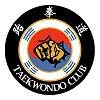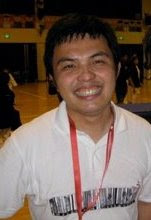Nurul Shafinas A. Rahman (left) and Nur Zakira Zakaria will represent Singapore in taekwondo in the inaugural Youth Olympic Games next month. -- PHOTO: BERITA HARIAN
ASIAN countries have been traditional powerhouses in taekwondo as they boast comprehensive development systems that mould the bright stars of today into the champions of tomorrow.
For those reasons, they look likely to dominate taekwondo at next month's Youth Olympic Games (YOG).
For those reasons, they look likely to dominate taekwondo at next month's Youth Olympic Games (YOG).
Asia won seven out of eight gold medals in Athens 2004 and six golds in Beijing 2008.
The continent's nations accounted for four of eight gold medals when taekwondo was introduced as an official sport in the Olympic Games in Sydney 2000.
Singapore Taekwondo Federation (STF) general manager Lim Teong Chin singled out South Korea, Iran, China and Mexico as the nations most likely to strike gold at the YOG.
He said: 'The Koreans have been powerhouses since day one, and have a strong men and women's team. The Iranian men are very strong, while Mexico have been among the top for a while.'
China boast a strong women's team, having won at least one taekwondo gold in every Olympics since Sydney 2000.
Lim also tipped Russia to shine owing to the sport's popularity, tradition and infrastructure.
According to him, the Iranians train eight hours a day, seven days a week. There are also plenty of local and national championships, including eight taekwondo leagues for different age groups and weight classes.
'Taekwondo is quite well established in Iran. More than a million people practise it,' he said.
'There are many championships in Korea too, as taekwondo is the national sport there.'
The sheer numbers competing provide more exposure for players, and the intense competition ensures only the best make it to the top.
Drawing a comparison, Lim said Singapore's national championships usually see two or three fighters per category. A player in Iran would have to go through 12 or 13 rounds to win in his category.
China's national players train full-time, and take advantage of Beijing's proximity to Seoul - the two cities are an hour's flight apart - by travelling there often to spar with their Korean counterparts.
The big name arriving for the YOG is Iranian Rezaei Kaveh, a gold medallist in this year's World Junior Taekwondo Championships in Mexico.
Rezaei aside, the other Asian players who won medals at the World Junior event will not be coming to Singapore.
According to Lim, a possible reason for this is the depth of talent these countries have in each weight division, which allows them to field different athletes in competitions for the exposure.
Even so, he said those entered still rank among the best for their age group.
'It's going to be a level playing field among the top nations,' he said. 'It could be anybody's game.'
A total of 100 players will battle for honours in 10 weight divisions. They are aged between 16 and 17.
When asked about Singapore's chances, Lim said local players faced a difficult task because of the disparity in training hours.Studies and other commitments mean Singapore's four representatives train about 10 hours a week, while the top countries put in eight hours a day.
STF committee member Lee Thiam Poh tipped Christopher Lee (63-73kg) as Singapore's best hope because of his 1.72-metre height, which allows him to aim kicks at the opponents' head.
In taekwondo, kicks to the head are worth three points while strikes to the body earn just one.
Said Lim: 'Our four exponents are on par skill-wise. They have been putting in maximum effort and are progressing well. They can definitely go further if given a favourable draw.'
Jul 29, 2010
YOUTH OLYMPIC GAMES: SINGAPORE 2010
YOUTH OLYMPIC GAMES: SINGAPORE 2010





















No comments:
Post a Comment